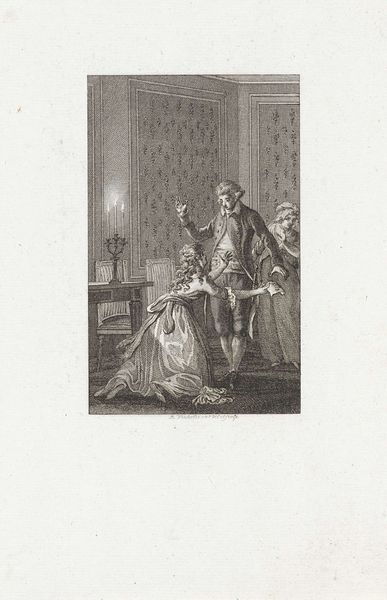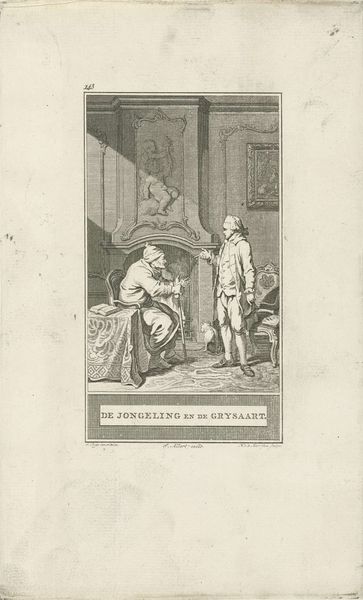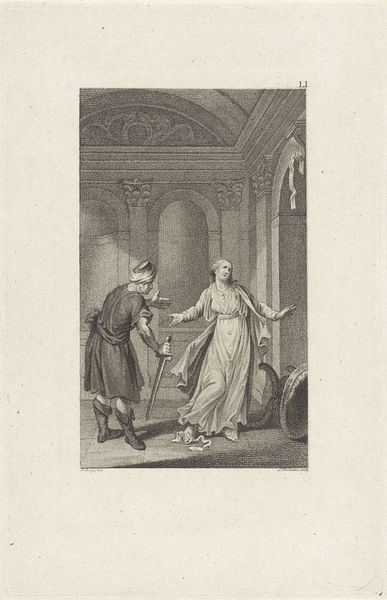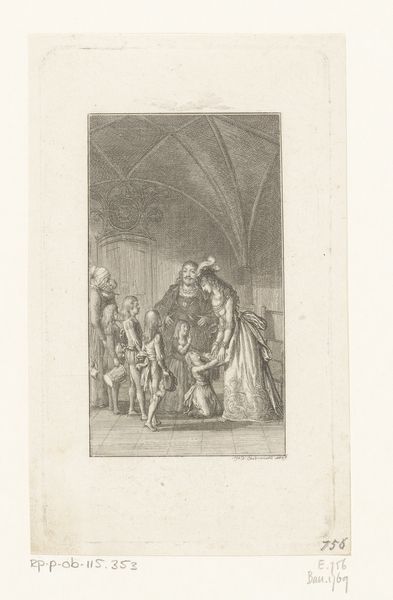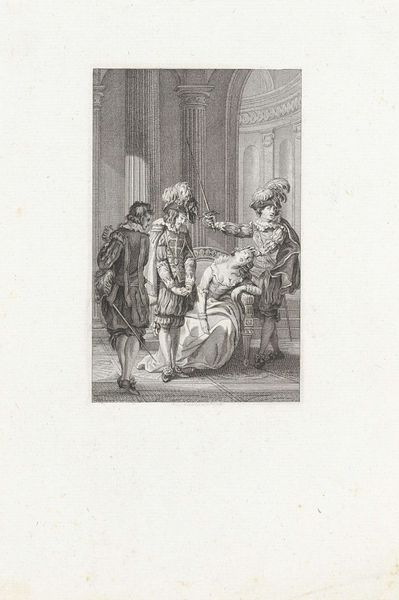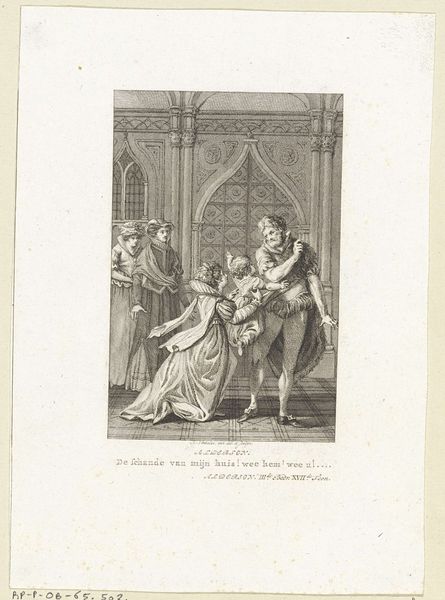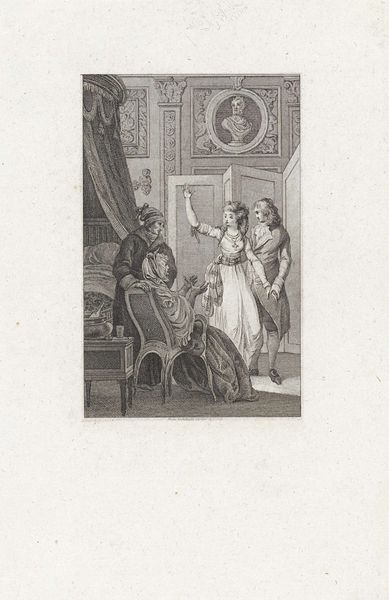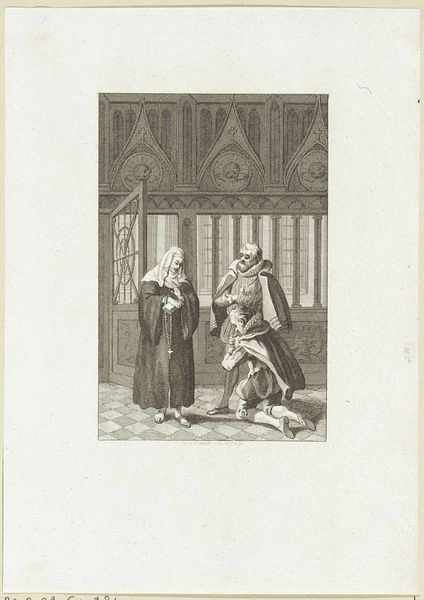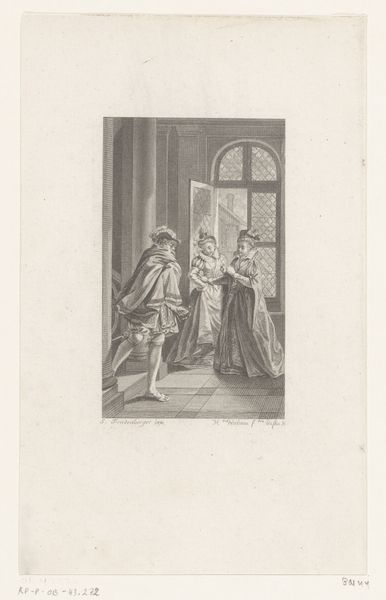
Graaf van Nithsdale verwisseld van kleding met zijn vrouw om te ontsnappen uit de gevangenis 1786
0:00
0:00
Dimensions: height 230 mm, width 150 mm
Copyright: Rijks Museum: Open Domain
Curator: What a dramatic scene! This print from 1786 is by Reinier Vinkeles. It’s entitled *Graaf van Nithsdale verwisseld van kleding met zijn vrouw om te ontsnappen uit de gevangenis*, which translates to "Count Nithsdale exchanges clothes with his wife to escape from prison." The Rijksmuseum holds this particular engraving. Editor: It has such a strangely captivating quality, doesn’t it? All those tiny, deliberate lines, composing the image with near-obsessive intricacy. One almost feels the rough texture of the paper. You get such a sense of the physical act of making it. Curator: Absolutely, and knowing that it is an engraving adds another layer of meaning to it. Each line, carefully etched, speaks to the labor and the deliberate nature of printmaking at that time. We can really see this not only as art, but as artifact of 18th-century production and political commentary. The prints themselves were often tied to socio-political movements. Editor: Exactly. Think of the social networks required to produce and distribute imagery such as this. I wonder about the access of this imagery and how the physical availability of this artwork may shape public discourse surrounding class issues. Curator: That's very true. We're witnessing a visual narrative meant for broad circulation. It's not just about one man's escape but the larger commentary it makes on power and rebellion. Consider the role of the engraver; someone crafting this image for a potentially politically charged market. Editor: The gender dynamics at play here also strike me. The wife, enacting a subversive role through the simple act of swapping garments. What can be more transgressive than this? The image itself, its making and dissemination, all form part of a daring operation. Curator: Indeed, the swapping of clothes becomes a powerful symbol, highlighting the wife’s agency and resourcefulness in the face of political oppression. This all emphasizes how artistic creation during that period was so deeply intertwined with social and political realities. Editor: And that intertwining, evident in the print's narrative, its materials, and the modes of its dissemination, all serves to enhance our experience of this very object. It provokes us to reflect on the power dynamics of gender and politics as they manifested through artistic expression. Curator: Well, this piece certainly leaves a lasting impression, prompting reflections on its historical narrative and its commentary on gender and social status. Editor: It really does – making us appreciate art’s capacity to intertwine personal narrative and broader social struggles, captured vividly in material form.
Comments
No comments
Be the first to comment and join the conversation on the ultimate creative platform.


